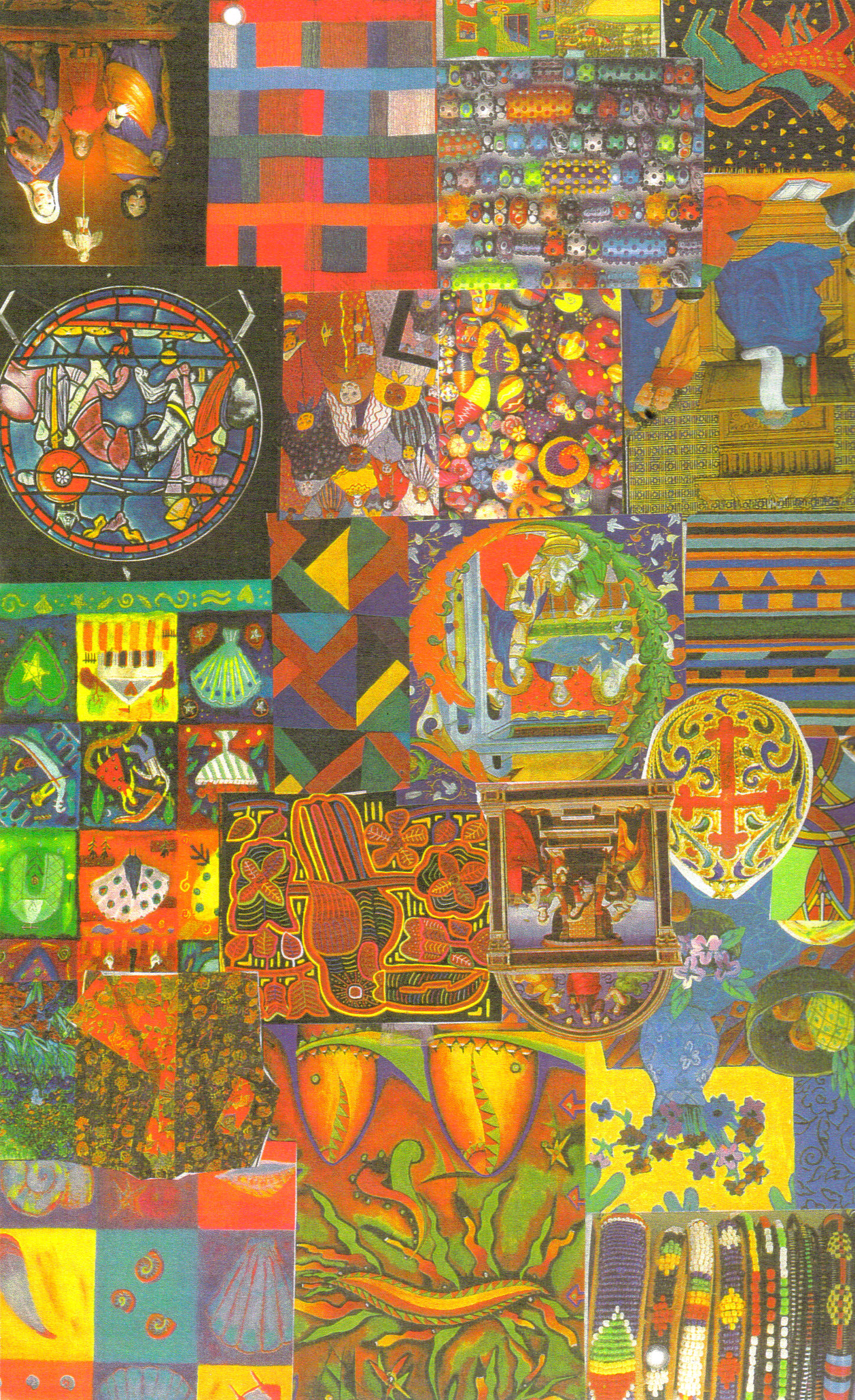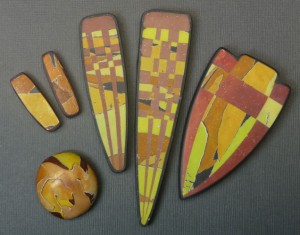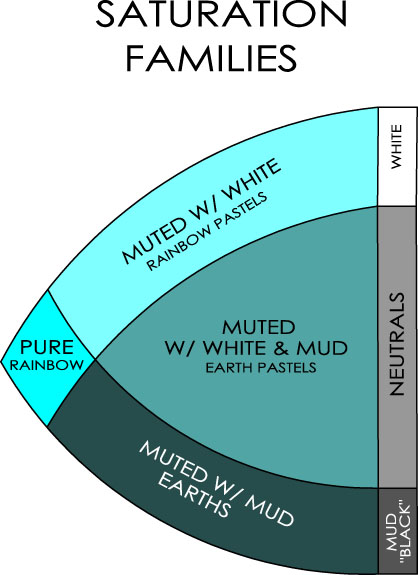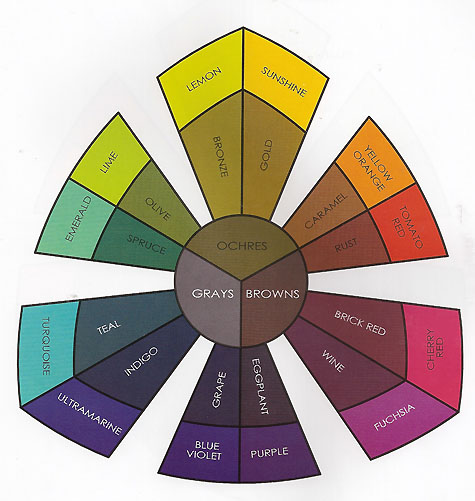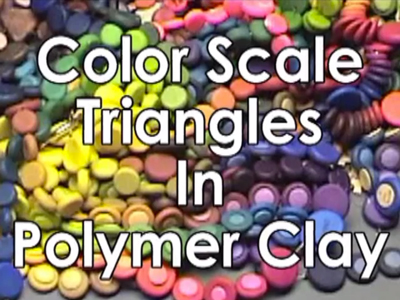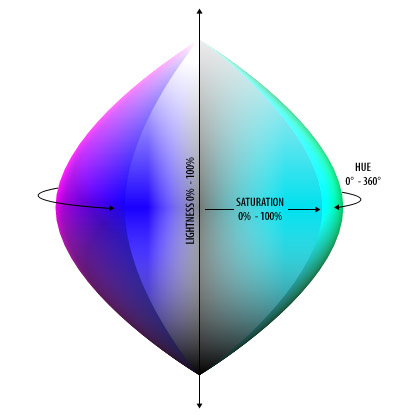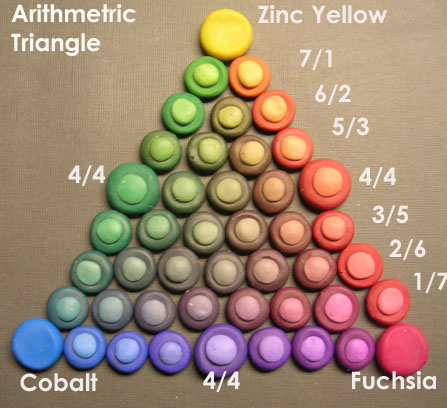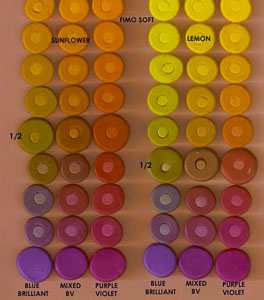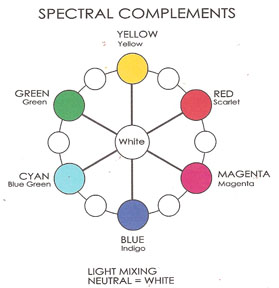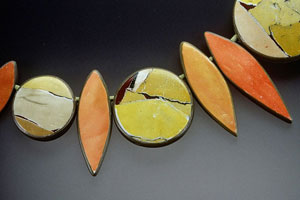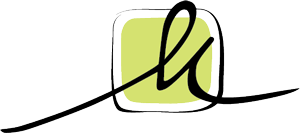I began making color collages when I moved into my first out-of-the-house studio in 1996. I finally had lots of wall space and decided to pull out the basket with postcards, greeting cards, clippings, art catalogs, and memorabilia that I had saved over the years and get them up on the wall. At first they went up willy-nilly, but when […]
Maggie Maggio
Exploring Color in the 21st Century
Page 4 of 5
I am having trouble with my camera but here’s a quick and dirty tutorial on using the watercolor technique to make “torn paper” beads similar to the bead on the lower left. 1. Mix a palette. I always start a project by mixing a set of colors that “hang together.” Make at least one color in each hue […]
The concept of saturation is a tough one. The terms tinting and shading usually have to do with changing the value of a color but they also have to do with changing the saturation. Tinting is mixing a color with white, shading is mixing a color with black (or mud, or the complement.) The term “tone” […]
A New Color Diagram After playing with many versions of triangular and circular color diagrams, I decided to design a hybrid Color Sorter specifically for the book. I called the primaries Yellow, Blue and Magenta and divided them each into two variations. I have argued […]
Joey and I spent some time tonight posting the third video, Smashing Color Triangles. Then I remembered I need to give you the links for the handouts. Here they are: Color Scales Handout Instinctive Mixing Handout Color Scales Triangle Worksheet The video ends with a suggestion to use the triangle to practice mixing colors instinctively […]
Over the years I’ve tried many different ways to mix the colors in the middle of a three primary triangle. Nothing seemed to work until I came up with what I call “Base Mixing.” Base Mixing is a two part process that starts with mixing a series of purple colors along the bottom of the […]
On the left is a color pyramid the way I see it. On the right is the same triangle the way my next door neighbor Steve sees it. Steve is red/green color blind. When I asked him what it is like to be color blind he said, “See that bush with flowers. They are pink, […]
The Name That Color site reminded me of a game I sometimes use in workshops to jumpstart a discussion about naming colors. Its looks like a quiz so it might trigger some test anxiety. Don’t fret. I included an answer key. Try to fill in the blanks before looking at the answers. Its not too hard once you get started. Since […]
Chirag-Mehta has done an amazing amount of research trying to pin down some common names for colors. Name That Color allows you to pick a hue and then play with all the variations to see what names come up. Its fun! The diagram you will use to select the colors is based on the HSL color space. Thanks […]
Value is the most difficult of the three properties of color to see correctly. Hue is very easy – we are used to putting colors into their family groups. Saturation is easy once you get the hang of it – colors are clear, muted, or muddy. But value often stumps us. Color theory books traditionally illustrate a value […]
I’ve been busy working on the planning for the National Polymer Clay Guild Conference next February. The Request for Proposals deadline was last Tuesday and we have over 100 proposals to review! In the middle of all this Joey and I did manage to get one of the two videos we are working on ready […]
The best way to show the full gamut or range of colors that can be mixed from three primaries is with a triangle and, just like the color scales, there are two variations of color triangles; arithmetric and geometric. Mathematical vs Visual Balance Arithmetric Triangles put the 1/2:1/2 mixes (in the sample they are labeled 4/4) in the middle position […]
Color scales are step-by-step mixes showing the range of colors that you get by mixing two colors in different proportions. You can use any two colors to make scales. The first one I did was black to white, then I tried red to yellow, yellow to blue and blue back to yellow to get the […]
Complementary colors are shown opposite each other on most color wheels, but what is often missing is the neutral color in the center. There are at least four variations of complementary color wheels, each with a different neutral color in the center. Wheel #1: Spectral Complements Spectral complements mix to make white light. The value […]
Over the last year there has been a flurry of interest in my Watercolor technique with tutorials and videos by enthusiastic artists popping up in many places. Remember playing the game of “Telephone” or “Whisper Down the Lane” and by the time the last person repeated the information it was all mixed up? That’s what […]
© 2024 Maggie Maggio
